Warehouse Racking Safety Inspections.
As a warehouse manager, or health & safety manager ensuring the structural integrity of your storage racking is one of your top priorities. Faulty or damaged racking puts your stock, equipment, and staff at serious risk. Regular racking inspections are the only way to identify issues early and take corrective action before an accident occurs. This guide provides a comprehensive racking inspection checklist using the traffic light system to evaluate the condition of all racking components from the floor up. With this checklist in hand, you will be able to instantly determine remedial work needed and prioritise repairs to address health and safety risks in your warehouse. Using this proven approach, you can safeguard your business from the damaging consequences of rack collapse.
Understanding Warehouse Racking Inspections
Warehouse racking inspections are essential to ensure the structural integrity and safety of your storage system. As a warehouse manager, conducting regular racking inspections should be one of your top priorities.
Types of Inspections
There are two main types of warehouse racking inspections:
- Visual inspections: Performed monthly, these quick checks identify obvious signs of damage or wear and tear. Look for dents, rust, or leaning racks.
- Structural inspections: Comprehensive annual reviews conducted by a qualified SEMA-approved SARI-approved inspector. They evaluate the racking for compliance with the original design and installation standards. Load testing may also be required.
What to Check
A proper racking inspection checklist will review all components of the storage system:
- Uprights: Check for damage, dents or rust and ensure they are securely bolted to the floor and not twisted.
- Beams: Look for bends, cracks or broken welds and confirm beam connectors and beam-to-upright connections are secure.
- Beam clips: Missing incorrectly fitted or wrong type
- Bracing: Bent or damaged diagonal/Horizontal Bracing
- Bolts: All bolts especially floor anchors are tight and not damaged/sheared.
- Footplates: Are not bent, twisted or torn
- Safety equipment: column protectors, barriers and end-of-aisle protectors are properly installed and functioning.
- Check that bolts are secure in the concrete and they have not been ripped out and taken sections of concrete out
- SWL & Load Notices: Confirm all racks have SWL (safe working Load) labels and Racking Load Notices indicating the maximum load capacity, and beam levels to prevent overloading the beam or bay.
By following a comprehensive racking inspection checklist, you can identify risks, determine appropriate corrective actions, and ensure a safe working environment in your warehouse facility. Conducting regular inspections is critical to avoiding structural failures, collapses, and accidents.
Key Areas to Inspect in Pallet Racking Systems
As a warehouse manager or health & safety manager, conducting regular inspections of your pallet racking system is critical to ensuring safety and compliance. There are several key areas you will want to thoroughly inspect:
Upright Frames
The frames consist of 2no vertical uprights that support the load beams. Inspect each upright for dents, bends, corrosion, or any other damage that could compromise its strength and stability. Measure the uprights to ensure they are still level and plumb. Any uprights that are damaged or out of alignment should be repaired or replaced immediately.
Load Beams
Load beams are the horizontal beams attached to the upright frames that hold the pallets. Inspect each beam for signs of over-deflection or damage like cracks, dents or corrosion. Check that the beam is securely attached to the upright frame on both ends. Defective or unsecured beams should be taken out of service right away.
Bracing
Bracing, such as diagonal bracing or Horizontal bracing, provides lateral support to the racking structure. Ensure all bracing is properly installed and secure. Look for any damage (bending) or deterioration and tighten or replace as needed. Bracing is essential to the overall stability of the racking system.
Anchoring
Racking systems must be securely anchored to the floor to prevent tipping or collapse. Inspect the anchoring system for signs the anchors have pulled out of the concrete or the nuts and bolts have come loose. Anchors that are damaged or unsecured can be an immediate hazard and should be addressed promptly.
By thoroughly inspecting these key areas of your pallet racking system and performing any necessary corrective actions, you can help ensure a safe warehouse environment and continued productivity. Racking inspections, when done consistently and properly, are an important part of an effective warehouse safety programme.
How to Conduct Thorough Pallet Racking Inspections
To conduct a thorough inspection of your warehouse pallet racking, follow these steps:
Inspect Uprights
The frames consist of 2no vertical uprights that support the load beams. Inspect each upright for damage (bending) like dents, cracks, or corrosion. Check that uprights are plumb (vertically straight) and securely anchored to the floor. Damaged or unsecured uprights compromise the structural integrity of the entire racking system.
Examine Load Beams
The load beams span between the uprights and support the pallets. Inspect each beam for signs of damage or excessive wear like cracks, dents, or rust. Ensure load beams are level not deflecting too much and securely attached to the uprights. Distorted or unsecured beams cannot properly support pallet loads and lead to collapse.
Decking & Support Bars
Pallet supports include elements like Timber Decks. Mesh decks and pallet support bars that hold provide additional support for the pallets. Ensure pallet supports are straight, securely fastened, and show no signs of damage such as breaking or bending. Loose or damaged pallet supports do not provide adequate support for pallets and their loads.
Inspect Safety Mechanisms
Safety mechanisms like column protectors, barriers rail protector guidance, and anti-collapse mesh netting help prevent damage to racking components and injury to workers. Check that all safety mechanisms are properly installed and in good working condition. Faulty or missing safety equipment exposes racking structures and people to potential harm.
Test Stability
Conducting regular inspections of your warehouse pallet racking and promptly addressing any issues found helps ensure a safe storage environment and working conditions for all. Safety is an ongoing process that requires continuous monitoring and improvement.
Using Traffic Light Coding for Racking Inspection Checklists
A racking inspection checklist aims to identify damaged components of warehouse racks. Using a traffic light system allows you to assign corrective actions and address health and safety risks.
Red Light Hazards
Red light hazards require immediate correction and racking should not be used until fixed. These include:
- Structural damage: Buckled or bent uprights, bracings or beams. This compromises the entire rack structure.
- Loose or missing components: Bolts, nuts, washers or other parts that join rack sections are loose or missing. This makes the rack unstable and prone to collapse.
- Impact damage: Racking has been subjected to collision with lift trucks or other vehicles. This causes dents, bends and weak points in the metal.
- Corrosion: Excessive rust or corrosion damage, especially on load-bearing parts. This significantly reduces the strength and lifespan of the racking.
Amber Light Defects
Amber light defects should be remedied promptly. These include:
- Dents or bends: Minor dents and bends in uprights or beams that do not affect the main structure. These still pose risks and will worsen over time.
- Missing Load notices: Safety Working Load labels and bay load capacity signs that are missing. These must be re-attached or replaced to ensure safe loading and identification.
Green Light
Green light indicates the racking is in good, safe working order. No corrective action is required at the present time but may have advisories to monitor. However, regular inspections should still continue to identify any developing issues early on.
Using a comprehensive racking inspection checklist and traffic light system allows you to keep warehouse storage racks in safe working condition, reduce health and safety risks, and prevent costly damage or collapse. Conducting regular inspections and promptly addressing any defects found is essential for racking safety.
Assigning Corrective Actions to Racking Inspection Findings
Once the racking inspection has been completed and the findings have been recorded, the next step is to assign corrective actions to address any identified risks or damage. This process should be carried out promptly by warehouse management to ensure the safety of personnel and the continuity of operations.
Corrective actions will depend on the severity of the issues uncovered during the inspection. Minor dents, twists etc can often be addressed through routine maintenance. More serious damage like damaged (bent) uprights, bowed beams or loose connections will require immediate action. In these cases, the affected area should be cordoned off and repairs scheduled as an urgent priority.
Assigning Priorities
Corrective actions should be prioritised based on the traffic light system used in the inspection. Issues flagged as ‘red’ should be addressed first, followed by ‘amber’ and then ‘green’. Management should review the inspection report and schedule repairs, replacements or other remedial work as needed. Urgent issues may require temporary solutions which can be made as immediate offloading of the bay/bays.
Communicating Findings
Warehouse staff should be informed of any changes made as a result of the inspection, including areas that have been cordoned off and any new safety procedures put in place. Once corrective actions have been completed, conduct a follow-up inspection to ensure all issues have been adequately addressed before normal operations resume. Generally, it’s the responsibility of all staff to report any damages or concerns at any time even if they are not sure if it may be dangerous.
Continuous Improvement
In addition to addressing specific damage and risks, the inspection report can be used to identify opportunities for improving overall warehouse safety and performance. Look for any trends in the types of issues found and see if racking design, layout or loading/unloading procedures could be enhanced to prevent similar problems in future. A comprehensive racking inspection, combined with prompt corrective action and continuous safety optimisation, will help ensure an efficient and hazard-free warehouse environment.
As you have seen, conducting regular racking safety inspections using a comprehensive checklist is critical for any warehouse operation. By diligently inspecting your racking system and assigning corrective actions where needed, you can avoid potentially catastrophic accidents and ensure your warehouse is a safe environment for all staff. The traffic light system enables you to instantly identify and prioritise any damaged or faulty parts that require maintenance or replacement. With a rigorous racking inspection schedule and process in place, you will have peace of mind knowing you are compliant with all health and safety regulations and your racks are as structurally sound as the day they were installed. The safety of your staff and the continuity of your business depends on it. If you would like STS to undertake a warehouse racking safety inspection, please get in touch.
Want to find out more? Further reading can be found on the HSE website! Or give one of our friendly team at STS Storage systems a call, and we’ll be happy to answer any questions you might have.
To book a free site visit, just enter your details below and we will get in touch.



